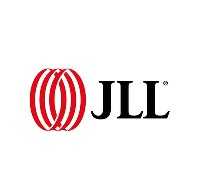Jones Lang LaSalle Predicts New Signs of Life in Healthcare Real Estate
Increased ambulatory care, mergers and acquisitions and cost containment expected in years ahead
CHICAGO, IL – June 2, 2011 – (RealEstateRama) — Uncertainty surrounding healthcare reform, a constrained capital environment and intense cost-containment demands represent the triple threat that put healthcare growth and construction on life support for the past several years. But since early 2011, improved liquidity in the capital markets and an increasing desire to enact a thoughtful, well-planned approach to meeting future demands are producing new signs of life, according to Jones Lang LaSalle’s Healthcare Solutions group and its Healthcare Real Estate Spring Outlook.
“Healthcare-related facilities have all felt the effects of a sluggish economy and new and pending federal regulation,” said Peter Bulgarelli, Chief Operating Officer of Jones Lang LaSalle’s Healthcare Solutions group. “Healthcare spending now encompasses more than 17 percent of the Gross Domestic Product in the United States and will continue to grow. Forward-thinking healthcare systems understand they must act now in preparing to fully address and integrate the needs of more than 32 million who will join the ranks of the insured by 2014.”
In its Healthcare Real Estate Spring Outlook Jones Lang LaSalle predicts the demand for healthcare real estate, particularly medical office buildings and other ambulatory care facilities, will continue to grow. Trends that will have the greatest impact for healthcare owners and operators include:
Healthcare Development Becomes More Intentional Development plans for outpatient facilities, ambulatory care and strategic links between hospitals and the communities they serve that had been put on ice for the past few years are now thawing and moving forward. More than ever, these developments are part of dynamic, need-based growth strategies and, in the absence of traditional financing outlets, are moving forward with creative financing sources.
One example is the construction of a medical office building by Piedmont Healthcare. Jones Lang LaSalle is representing Piedmont, the major tenant in the MOB. Piedmont is building the property to decongest their main campus and make outpatient services more accessible.
“There is a great deal of pent-up demand for healthcare real estate, exemplified by over $10 billion of REIT capital raise in 2010 due to the superior performance of medical office buildings and other outpatient facilities during the downturn,” said Mindy Berman, Managing Director of the firm’s Healthcare Capital Markets group. “Supply of properties for sale is limited as healthcare systems shut down their new development over the last few years.”
Berman added that restoration of economic stability for hospitals, along with demographic growth and the push to outpatient services, is launching new development activity.
Joe Euphrat, Managing Director in the firm’s Healthcare Capital Markets group, added that the tax-exempt bond market essentially disappeared in the fall of 2008 and remains disrupted. The cost of funds has narrowed between tax-exempt rates and private/public healthcare capital investors which is causing more systems to seek alternative capital sources for funding.
“Hospitals aren’t monetizing existing assets but instead are turning to third party developers for new capital,” said Berman. “Cap rate compression for investor sales and deeper discounts for developer returns on new projects are de rigueur as investors compete for product.”
Mergers and acquisitions will further accelerate growth The consolidation of hospitals and systems will continue along with acquisitions of severely challenged hospitals by larger systems and, in some markets, not-for-profit organizations by for-profits. The main consolidation trend affecting healthcare real estate in the months to come will be a significant uptick in mergers as providers seek to capitalize on economies of scale and mitigate the impact of reduced rates of reimbursement. For example, a merger of two hospital systems will allow them to offer high-complexity services at just one facility—thereby eliminating the need for duplicate managers, supplies and specialists.
“Smaller physicians groups and sole community providers are now making dramatically different choices as they look toward the future,” said Scot Latimer, Managing Director of the firm’s Capital Asset Strategy practice. “The autonomy and independence of the past has been supplanted by a desire to become part of a larger whole—securing better access to services for both patient and physician. Unlocking the full promise of a merger can be complex and consuming, and systems in consolidation will be challenged to maintain appropriate external focus.”
Added Richard Taylor, Managing Director of Healthcare Solutions, “Less financially secure hospital systems will pay the price for lowered reimbursement rates due to healthcare reform. In order to survive and stay profitable, they will be required to seek scale, operating efficiency and standardization of care.”
Ambulatory facilities will serve greater demands An influx of patients seeking access to care, will force healthcare systems to re-evaluate where care is offered. A standard for calculating medical space holds that a healthcare system requires about 1.9 square feet of medical office space per patient. With more than 30 million being added to the ranks of the insured, that means there will be a need for 64 million additional square feet of medical space. Much of that will come in the form of medical office buildings, hospitals without beds, or other ambulatory care facilities.
Said Shawn Janus, Managing Director of the firm’s Development Advisory, “No matter their position on healthcare reform, most healthcare experts agree there needs to be a greater focus on providing coordinated care before a patient becomes acute and needs a hospital.”
Increasingly, providers are seeking ways to optimize their real estate portfolios and expressing far greater interest in ‘location intelligence’. Finding the right location for the right asset—one that supports both the patient’s needs and the facilities business strategy—has become more important than ever before.”
Cost containment strategies are on the rise The U.S. currently spends more than $2.5 trillion annually on healthcare and this amount could increase to $4 trillion if nothing is done to control these escalating costs. Hospitals that are most cost-effective will be rewarded under healthcare reform. Those systems that enact changes to curtail their existing costs by eliminating inefficiencies will be the front-runners in the race to provide streamlined, quality healthcare.
“We’re currently working with a number of hospital systems to evaluate annual operating and capital expense spend and identify improvement opportunities for greater economies and efficiencies. We’re looking at everything from purchased services to labor models with an emphasis on energy, repairs and maintenance and enhanced service delivery. No line item is too small for scrutiny when it comes to cost containment efforts,” said Bill Conkling who leads the firm’s strategic planning group.
Dramatic changes looming in accounting practices Proposed changes to the principles of lease accounting will dramatically impact the healthcare real estate industry. The requirement to include all operating leases as balance sheet liabilities diminishes perceived credit worthiness, may infringe on covenant compliance and strain capital resources.
“Developers, landlords and tenants all will be tested to initiate creative long-term lease strategies in an already difficult capital environment,” said Berman.
“Healthcare systems will develop new facilities differently than they have in the past to respond adequately to future reform,” said Chip Cogswell, Managing Director of the firm’s Healthcare Program Management group/division. “The focus will be on developing facilities that are operationally efficient and are designed with future flexibility. When the time comes to put shovel to ground—and it will come sooner than many expect—we have the ability to help those administrators reduce fixed costs and streamline project delivery while addressing Federal accounting standards.
About Jones Lang LaSalle National Healthcare
Jones Lang LaSalle’s National Healthcare group works with hospitals and health systems throughout the nation delivering program management, strategic consulting, financial strategy, transaction and sustainability advisory services and facilities and property management. Through its work, the Healthcare group drives efficiencies and enhances quality through the unrealized potential of real estate assets and infrastructure.
About Jones Lang LaSalle
Jones Lang LaSalle (NYSE:JLL) is a financial and professional services firm specializing in real estate. The firm offers integrated services delivered by expert teams worldwide to clients seeking increased value by owning, occupying or investing in real estate. With 2010 global revenue of more than $2.9 billion, Jones Lang LaSalle serves clients in 60 countries from more than 1,000 locations worldwide, including 185 corporate offices. The firm is an industry leader in property and corporate facility management services, with a portfolio of approximately 1.8 billion square feet worldwide. LaSalle Investment Management, the company’s investment management business, is one of the world’s largest and most diverse in real estate with more than $41 billion of assets under management. For further information, please visit our website, www.joneslanglasalle.com.
Contact:
Paige Steers
+1 312 228 2797
Michael Millar
1 312 644 7211















